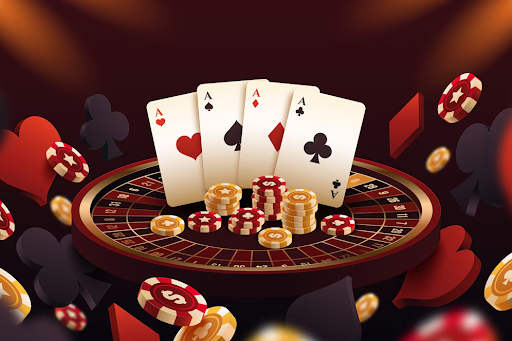
The Psychology of Winning: What Drives Top Athletes?
Success in sports is often attributed to physical prowess and skill. However, underlying these attributes is a powerful psychological component that can determine an athlete’s triumph or failure. Understanding the psychology of winning can provide valuable insights into what drives top athletes to excel repeatedly.
Let’s delve into the intrinsic and extrinsic motivators that propel these athletes to new heights.
What is Motivation?
Motivation is the driving force behind an athlete’s passion, persistence, and performance. According to self-determination theory, motivation stems from two core sources: intrinsic and extrinsic. These are defined as:
Intrinsic Motivation
Personal fulfillment, enjoyment, and an innate desire to master a skill are the driving forces behind intrinsic motivation. It fosters self-determination, leading athletes to persevere even without external rewards.
Extrinsic Motivation
This type comes from external rewards such as praise, money, titles, or recognition. In today’s digital age, social media likes, comments, and even virtual competitions provide extrinsic motivators.
Balancing these two forms of motivation is crucial for sustained success. Focusing too much on extrinsic rewards can diminish the intrinsic joy of the sport, potentially leading to burnout.
The Role of Intrinsic Motivation
Highly successful athletes often exhibit high levels of intrinsic motivation. Here, we’ll discuss the three key components of intrinsic motivation: competence, autonomy, and relatedness.
Competence: Striving for Mastery
Top athletes are driven by the desire to achieve mastery in their sport. They set personal standards of excellence and focus on individual improvement. Unlike outcome goals, which are dependent on external factors, mastery-oriented goals provide a sense of accomplishment and satisfaction.
Examples:
- A marathon runner setting a personal best time.
- A cyclist perfecting their technique over countless training sessions.
Autonomy: Having Control
Having a sense of control over one’s training and decisions can significantly boost an athlete’s engagement and determination.
Examples:
- Choosing one’s own training intensity and schedule.
- Athletes having a say in their workout plans.
Relatedness: Connection and Support
Athletes often thrive when they feel connected to their peers and receive support from their community.
Examples:
- Joining a group of running enthusiasts.
- Engaging in team sports where camaraderie is essential.
These intrinsic motivators ensure that athletes remain driven and passionate about their sport, leading to sustained success and personal growth.
The Impact of Extrinsic Motivation
While intrinsic motivation is essential, extrinsic factors play a significant role in an athlete’s journey. Let’s explore the different types of extrinsic motivation and their effects.
External Regulation
This is the most basic form of extrinsic motivation, driven purely by external rewards or penalties.
Example:
- An athlete training hard to win a cash prize or a trophy.
Similarly, in the world of sports betting, enthusiasts often engage in UFC prelims bets as a form of external motivation, adding an extra layer of excitement to their viewing experience. However, it’s important to note that for professional athletes, the focus remains on their performance rather than external factors like betting outcomes.
Introjected Regulation
Here, athletes internalize external pressures, which influence their behavior.
Example:
- Feeling the need to excel because of the expectations of fans or coaches.
Identified Regulation
Athletes recognize and accept the value of an activity, even if it is not inherently enjoyable.
Example:
- Participating in a grueling training regimen because they value its benefits for their overall growth.
Integrated Regulation
The most advanced form of extrinsic motivation, where athletes align external rewards with their personal values and beliefs.
Example:
- Preparing meticulously for a competition because it aligns with their long-term goal of becoming a champion.
Striking a balance between these types of extrinsic motivation is vital. Over-reliance on any one type can lead to unsustainable commitment and reduce the feeling of genuine achievement.
The Influence of Technology and Social Media
Today’s athletes navigate a landscape filled with technological advancements and social media influence, adding new dimensions to their motivation.
Social Media: A Double-Edged Sword
Platforms like Instagram and Strava offer athletes extrinsic rewards in the form of likes, comments, and virtual accolades. While these can boost motivation, they also pose risks.
Positive Impact:
- Recognition: Athletes receive instant feedback and praise, which can bolster their confidence.
- Accountability: Sharing their progress publicly can keep them accountable.
Negative Impact:
- Pressure: Feeling constantly watched can create undue stress.
- Comparison: Constantly comparing oneself to others can undermine self-esteem.
Virtual Competitions
Virtual Reality (VR) and Augmented Reality (AR) technologies provide new platforms for competition and training. Athletes can compete against others globally, offering a fresh source of extrinsic motivation.
Benefits:
- Accessibility: Compete anytime, anywhere.
- Diversity: Exposure to a wide range of competitors.
Challenges:
- Over-reliance: Dependence on digital rewards may hamper intrinsic motivation.
- Isolation: Lack of physical camaraderie can affect relatedness.
Achieving the Balance: The Winning Formula
To ensure sustained success, athletes need to achieve a balance between intrinsic and extrinsic motivation.
Balance for Longevity
Too much focus on extrinsic rewards can lead to burnout and loss of genuine interest. In contrast, intrinsic motivation promotes long-term dedication and enjoyment.
Strategies:
- Set Personal Goals: Focus on process and performance goals rather than just outcomes.
- Seek Control: Ensure you have a say in your training regime.
- Build Connections: Engage with a supportive community.
Technology: Use Wisely
Leverage technology and social media to enhance motivation but be mindful of their pitfalls.
Tips:
- Moderate Sharing: Limit the frequency of sharing your workouts to avoid pressure.
- Virtual Balance: Use virtual competitions to supplement, not replace, real-world experiences.
Case Study: The Best Athletes
Many elite athletes exemplify the perfect blend of intrinsic and extrinsic motivation.
Example:
- A professional cyclist continues to train hard despite minimal external rewards, driven by the joy of mastering their sport. At the same time, they share milestones on social media to engage with fans and maintain accountability.
Conclusion
The psychology of winning hinges on understanding and balancing intrinsic and extrinsic motivators. By fostering competence, autonomy, and relatedness, athletes can sustain their passion and commitment. Meanwhile, judicious use of technology and extrinsic rewards can provide the necessary boost to reach new heights. In essence, a balanced approach ensures that athletes not only win but enjoy the journey every step of the way.
To all aspiring champions out there, remember: the key lies in finding your own balance. Recognize what drives you, harness those motivations, and let them propel you to greatness. After all, in the realm of performance sports, understanding what motivates you can be the ultimate game-changer.








